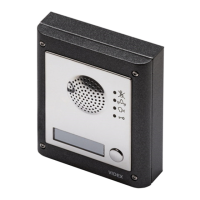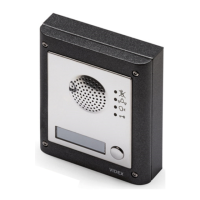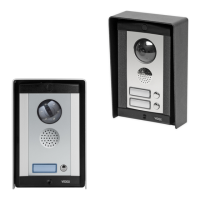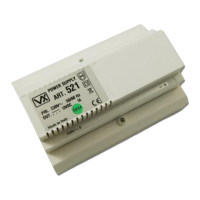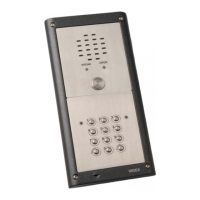66250754-4G-EN - V2.0 - 28/03/22
- 19 -
4000 Series GSM Audio Intercom - Technical Manual
4000 Series GSM Audio Intercom with Proximity
Art. 4903 Technical Information
PROGRAMMING WHEN INTEGRATED WITH THE GSM PRO ART.4810 MODULE VIA THE RS485 BUS CONNECTIONS
The Art.4903 can also be programmed using the GSMSK PC software
(refer to the manual GSMSK_66251720-EN_V2-1 or later), by SMS text
messaging (see notes on programming the GSM intercom on pages 37
- 66) and using the GSM mobile apps (see notes on the GSM mobile apps
on page 67). When wired directly to the GSM module using the RS485
bus, see Fig.13, additional access code features of the 4G GSM module
become available which include:
• Program up to 400 permanent access codes (000 - 399).
• Assign any of the 400 access codes to an access level (0 - 9) and relay.
• Program up to 32 temporary access codes.
• Allocate any of the 32 temporary codes to a specic time period
(between 1 - 255 hours) after which time the code will be deleted. The
time period will start from when the code is rst used.
• assign any of the codes, whether permanent or temporary, to trigger
any or a combination of the two relays (RLY1 and/or RLY2).
Also refer to notes RS485 network connection on pages 28 - 29.
The access codes can be 4 - 8 digits in length and are stored in the GSM
module’s memory and not the keypad. Even when the Art.4903 is
connected to the GSM module via the RS485 bus connection any access
codes programmed directly using the keypad, following the programming
owchart on page 18, for relays 1 and 2 (as if the keypad were programmed
as a standalone keypad) will still operate the respective relay.
The RS485 connection also allows the keypad to be networked with other
Art.4903 keypads, Art.4850R proximity readers (up to a total of 8 keypads
and/or proximity readers can be networked together) and also Art.2813
remote relays, where each module requires a unit ID to be setup, see setting
up the unit ID of the keypad notes on page 17.
OFFON
MOV
NO1 NC1
NO2 NC2
Fig. 13
RS485 BUS CONNECTION AND WHEN TO FIT A 120 RESISTOR
Please note that for the RS485 bus cable over a short distance (less than 100m), as shown in Fig.13, the bus termination jumper
(JP1) on the keypad should be set to the OFF position and a 120Ω resistor is not required across terminals A / B on the Art.4810/4G
GSM module. The RS485 bus termination is only required when additional RS485 devices are connected on the RS485 bus over
longer distances (refer to notes RS485 network connection on pages 28 - 29 for more information).
TERMINAL CONNECTIONS TECHNICAL SPECIFICATION
Connection Description Working voltage: 12V - 24Vac/dc +/- 10%
+ 12-24V AC or DC power input Current consumption: 20mA (standby); 70mA (max.)
- 0V power input Number of relays: 2, RLY1 and RLY2 (C, NC and NO)
C1 Relay 1 common connection
Relay contacts:
3A @ 24Vac/dc
(max.)
Relay current ⁄ voltage: 3A @ 24Vac/dc (max.)
NO1 Relay 1 normally open connection Push to exit inputs: 2, SW1 and SW2 (switched 0V)
NC1 Relay 1 normally closed connection RS485 bus connections: Yes, A and B
C2 Relay 2 common connection RS485 termination: Jumper JP1
NO2 Relay 2 normally open connection Back light adjustment: Jumper JPL
NC2 Relay 2 normally closed connection Networkable: Yes via RS485 (8 devices max.)
SW1 Switched 0V input to trigger relay 1 Back EMF protection: 2x MOV jumpers, JP2 and JP3
SW2 Switched 0V input to trigger relay 2 Number of codes: 2 codes, 1 per relay (standalone),
A
RS485 bus terminal connections
400 permanent codes (via RS485),
B
32 temporary codes (via RS485)
Programming: Via keypad (standalone),
SMS text message (via RS485),
GSMSK PC software (via RS485),
or the GSM mobile apps
Working Temperature: -20 +60
o
C
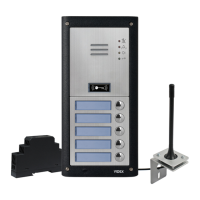
